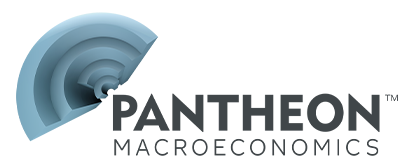US Publications
Below is a list of our US Publications for the last 6 months. If you are looking for reports older than 6 months please email info@pantheonmacro.com, or contact your account rep
Please use the filters on the right to search for a specific date or topic.
Shipments point to unchanged equipment investment in Q4.
Samuel TombsUS
Expect further mild core PCE increases in the near term.
Samuel TombsUS
- Big increases in purchases of high-value durable goods largely drove November's brisk consumption.
- Real after-tax income growth will slow next year amid modest wage rises and falling savings income.
- Spending growth will lull in mid-2025 even without tariffs, as people are acting now like they are coming.
Samuel TombsUS
This uptick in home sales will prove temporary.
Oliver Allen (Senior US Economist)US
- We look for a 0.13% increase in the November core PCE deflator, easing fears about sticky inflation.
- The unemployment rate probably still rose in December, despite the slight fall in continuing claims.
- The recent upturn in home sales is unlikely to last now that mortgage rates are rising again.
Samuel TombsUS
Multi-family volatility obscures the weak big picture.
Oliver Allen (Senior US Economist)US
- Most FOMC members envisage easing by just 50bp in 2025, but rising unemployment will spur more.
- WARN and Challenger data point to a renewed rise in jobless claims and an above-consensus print today.
- A rare rise in the Leading Economic Index in November will grab attention today, but it should be ignored.
Samuel TombsUS
- November's retail sales suggest real consumption is on track to rise by a solid 3% or so in Q4...
- ...But income growth is slowing and favorable wealth effects on spending will fade in 2025.
- Expect a downturn in residential construction, now that the pipeline of new projects is drying up.
Samuel TombsUS
Homebuilders seem too optimistic about the outlook.
Oliver Allen (Senior US Economist)US
Stagnation will remain the story in 2025.
Samuel TombsUS
Consumers aren’t throwing in the towel just yet.
Oliver Allen (Senior US Economist)US
- Retail sales likely grew strongly in November, as the drag from Hurricane Milton in October unwound.
- But mounting headwinds for households suggest weaker growth in consumers' spending in 2025.
- The consensus for growth in November production likely overlooks falls in mining and utilities output.
Samuel TombsUS
Some signs of pre-tariff inventory accumulation, but few firms are raising prices.
Samuel TombsUS
Services growth still robust, but the inflation outlook is encouraging.
Oliver Allen (Senior US Economist)US
Looser labour market will spur more Fed easing...
but tariff-led inflation will slow the pace, soon
Samuel TombsUS
- A 25bp easing this week is nailed-on, but recent data suggest a slower pace of rate reductions ahead.
- The median FOMC participant likely will project 75bp total easing next year, 25bp less than in September.
- The Fed is still too optimistic about the labor market; 100bp is our base case, but inflation risk is rising.
Samuel TombsUS
- Ignore PPI egg-flation; components relevant for the core PCE were soft, implying a mere 0.13% increase.
- The PPI data also point to a further decline in inflation in core services ex-rent in Q1.
- Low initial jobless claims paint an overly rosy picture of the labor market, given hiring is so weak.
Samuel TombsUS
Post-Thanksgiving volatility probably drove the jump in initial claims.
Oliver Allen (Senior US Economist)US
Core PCE components signal a mere 0.13% November increase.
Samuel TombsUS
- The 0.3% rise in the core CPI was powered by jumps in vehicle and hotel room prices, which are volatile...
- ...These components have a much smaller weight in the core PCE, which likely rose by just 0.2%.
- Expect 0.2% core PCE prints in December and January, but tariffs threaten to upend the benign trend.
Samuel TombsUS
